Recent Articles
Popular Makes
Body Types
10 Things You Need to Know About the 2020 Toyota Highlander
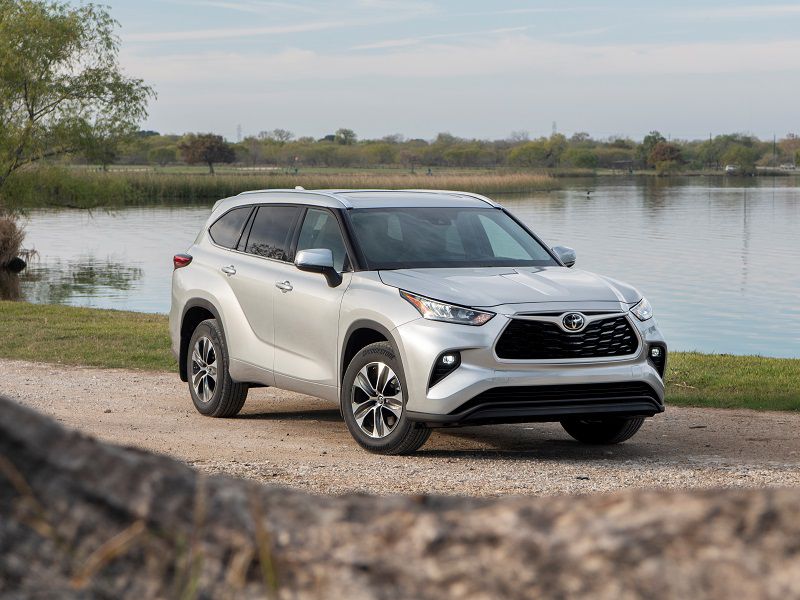
2020 Toyota Highlander XLE ・ Photo by Toyota
If there’s one thing you need to know about the redesigned 2020 Toyota Highlander, it’s that current Toyota Highlander owners are probably going to love it. In most respects, it is a better mid-size three-row crossover SUV than before, with a greater sense of style, significantly improved technology, and a dramatically upgraded Hybrid offering.
Looking beyond Toyota’s existing owner base, the new 2020 Highlander faces a longer list of competitors than ever. Some have more interior room and comfort, some provide better value, some deliver superior on-pavement performance, some go farther off-road, and some tow more weight. But none of them blend the Highlander’s deserved reputation for reliability with up to 36 miles per gallon in combined driving. Speaking of fuel economy, let’s dive right into the 10 things you need to know about the 2020 Toyota Highlander, beginning with a discussion of the impressive Highlander Hybrid.
1. The Highlander Hybrid has gotten more efficient.
By combining a 2.5-liter Atkinson-cycle gasoline four-cylinder engine with two electric motors, the new 2020 Highlander Hybrid produces a combined 243 horsepower while returning up to 36 mpg in combined driving. Granted, the previous Highlander Hybrid, which used a V6 engine, made more power to the tune of 306 hp. However, the best it could do in terms of fuel economy was 29 mpg in combined driving.
Naturally, you might ask if this change hurts performance during the daily drive. Toyota engineers estimate a 10% improvement in power and torque just from the battery and electric motors, so the new Highlander Hybrid still feels responsive when you accelerate. It’s not as quick, of course, but during a test drive in Texas Hill Country near San Antonio, the Highlander Hybrid effortlessly got 33.6 mpg. Oh, and by the way, the new Highlander Hybrid tows 3,500 pounds, matching the old version.
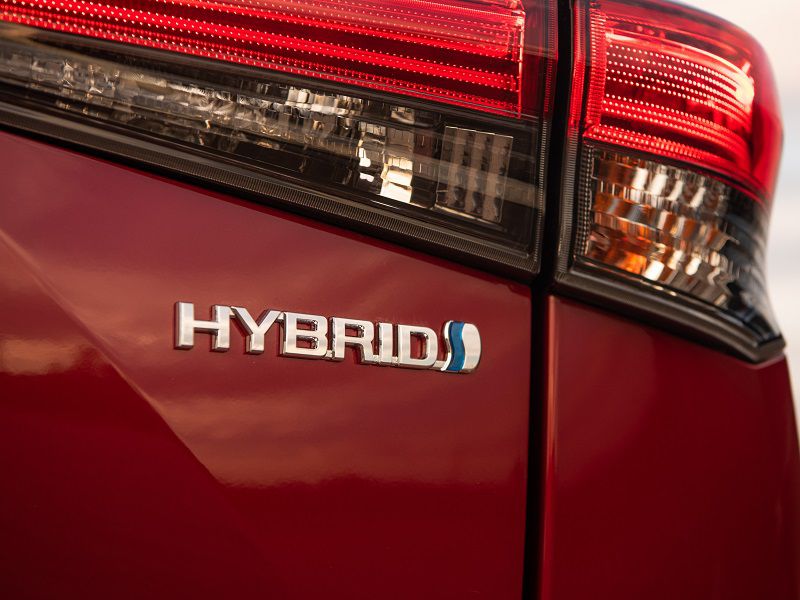
Photo by Toyota
2. The Highlander Hybrid now comes with or without AWD.
Another big change for the 2020 Highlander Hybrid is that you can get one with front-wheel drive. Previously, electronic all-wheel drive came standard. Furthermore, Toyota asks just $1,400 more for the hybrid powertrain, which is offered with LE, XLE, Limited, and Platinum trim.
At the same time, however, the new base price for the hybrid with front-wheel drive is $39,320, including a $1,120 destination charge. The old Highlander Hybrid LE, with more power and standard AWD, had a base price of $38,640. Add AWD ($1,600) to the new 2020 Highlander Hybrid LE, and you’re looking at spending $40,240.
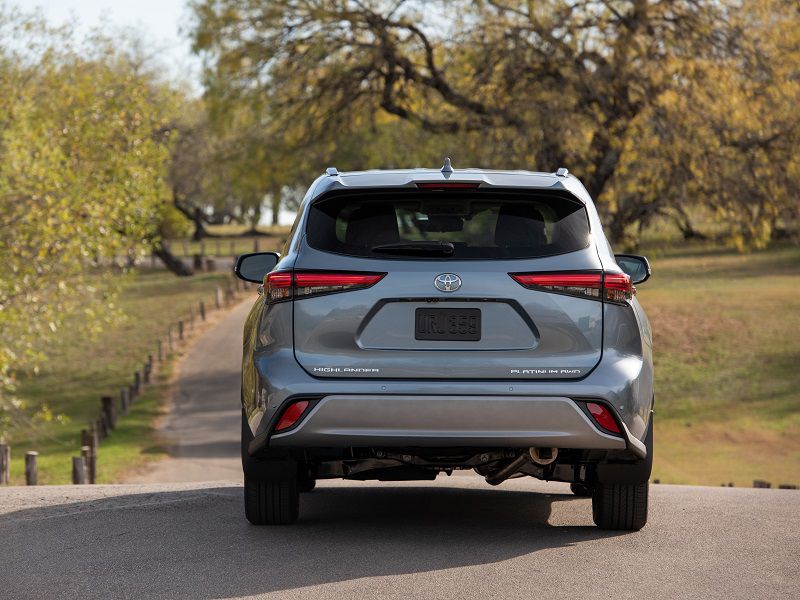
Photo by Toyota
3. Maintenance is free for two years or 25,000 miles.
When you buy a new Toyota, you get free scheduled maintenance for the first two years or 25,000 miles of driving. This sounds better than it is, but nevertheless provides added peace of mind and a sense of value. Plus, it allows your local Toyota dealership to establish a relationship with you in the hopes that when the free maintenance offer expires you’ll still come back for maintenance and repairs rather than whip through the local quick lube or tire shop.
A related feature is the Highlander’s 10-year free trial of Service Connect (available on the LE and higher trim levels), which delivers vehicle health reports, vehicle maintenance alerts, and maintenance reminders to your email inbox or your smartphone. All in all, Toyota dealers want to be your source for service.
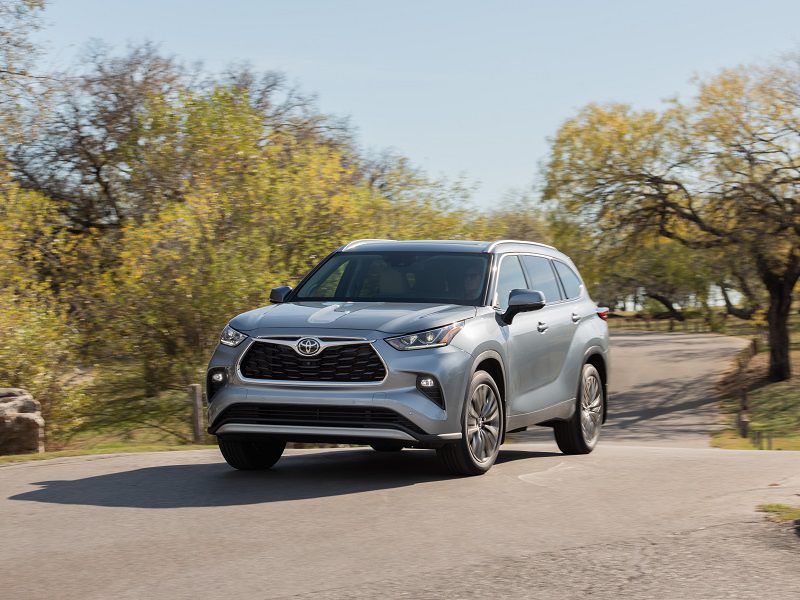
Photo by Toyota
4. Every 2020 Highlander includes on year of free Safety and Remote Connect services.
Another important freebie that you get with the new Highlander is a free year of Safety Connect services. They include automatic collision notification, SOS emergency assistance, quick access to roadside assistance, and a stolen vehicle locator. Among the Highlander’s competitors, this is one of the more generous trial periods of such features.
Additionally, Remote Connect is free for one year (LE trim and higher). Highlights of this service package include remote engine starting, remote access to the door locks, remote fuel level check, and a vehicle finder for when you’ve forgotten where you parked. Guest Driver technology is also included, and it's perfect for parents with teen drivers in the house because it provides notifications to the Highlander’s owner when speed, curfew, and mileage limits are exceeded.
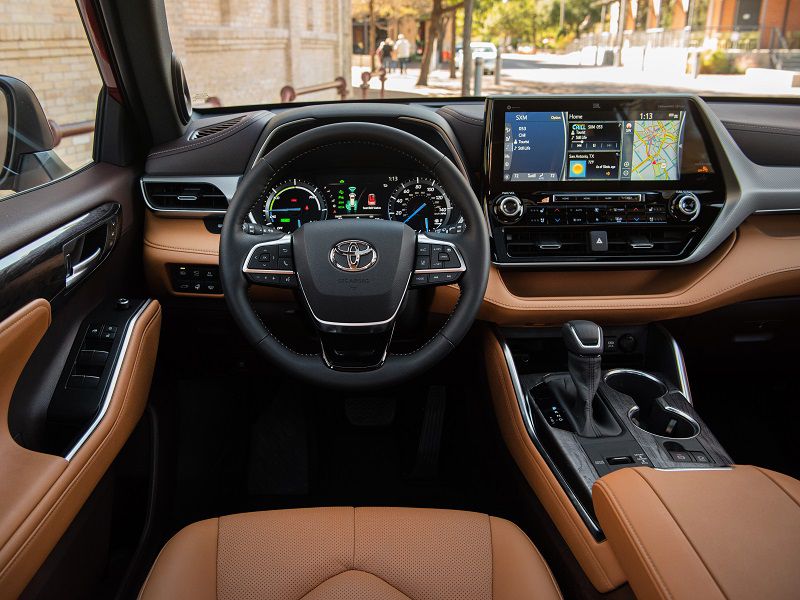
Photo by Toyota
5. Toyota Safety Sense 2.0 is standard.
Lots of car companies are making advanced driving assistance systems standard equipment. But Toyota Safety Sense 2.0 is special because it is genuinely refined and smooth in operation. In turn, that means a driver is more likely to actually use the technology rather than shut it off. Highlights include full-speed-range adaptive cruise control with stop-and-go capability, a forward collision warning with pedestrian detection, automatic emergency braking, a lane-departure warning, lane-keeping assist, Lane Tracing Assist, road sign recognition, and automatic high beams.
Lane Tracing Assist is Toyota’s new lane-centering system, and it works well. However, if you don’t hold the steering wheel, it shuts itself off in fairly short order, so it doesn’t provide any kind of emergency braking or SOS calling function. Additionally, all but the base Highlander L get a blind-spot monitoring system with rear cross-traffic alert. Automatic braking while parking is also available.
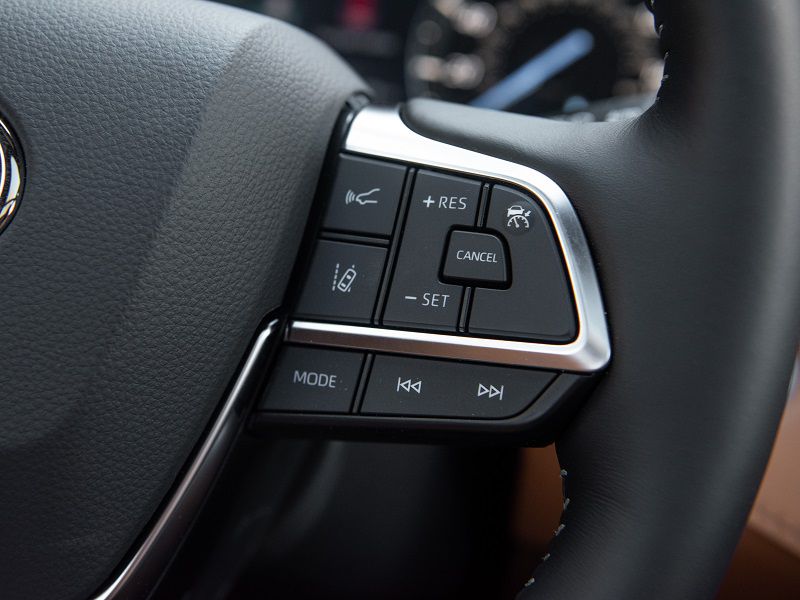
Photo by Toyota
6. There's a new 12.3-inch touchscreen infotainment system.
In order to get the Highlander’s new 12.3-inch touchscreen infotainment system display, you’ll need to upgrade to the Platinum trim level. The rest of the Highlander lineup features a familiar flush-mounted 8-inch touchscreen display.
People familiar with current Toyota infotainment systems will be instantly at ease with the graphics and general operation of the 12.3-inch system. Physical buttons provide shortcut access to main menus, and they’re flanked by gigantic volume and tuning knobs that look like they belong in the full-size Tundra pickup and not in a mid-size family crossover. Like all Highlanders, this top-shelf infotainment system includes Apple CarPlay, Android Auto, Amazon Alexa, Waze, and Wi-Fi Connect service. It’s also paired with a new 11-speaker, 1,200-watt JBL premium sound system with digital music clarification technology. Like most JBL systems, it can sound both too brassy and too boomy. Your results may vary.
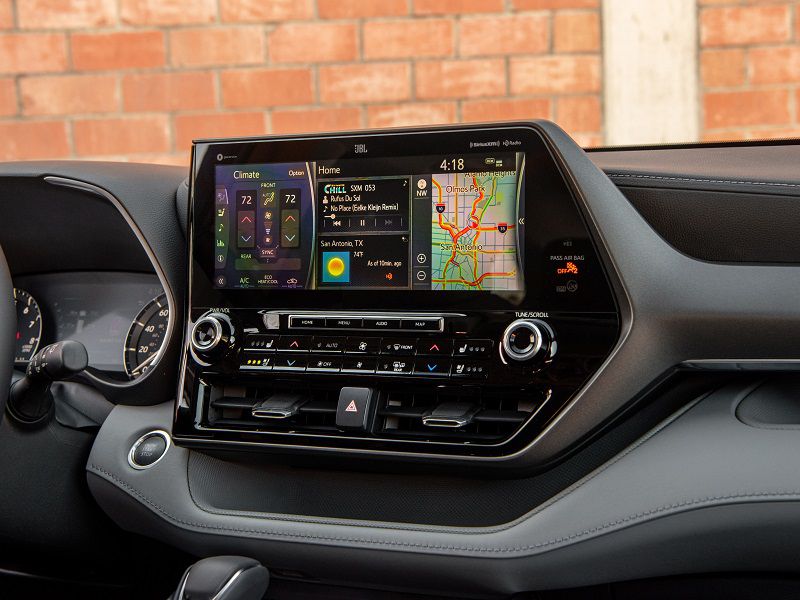
Photo by Toyota
7. The Highlander’s head-up display is visible even through polarized sunglasses.
A new feature for the 2020 Highlander, a 10-inch head-up display is standard with the Platinum trim. It includes a wealth of detail related to vehicle speed, driver-assist features, navigation directions, and more. Best of all, if you wear polarized sunglasses, you can still see it! Seriously, why can’t all car companies do it the Toyota way?
Another new visibility-related feature restricted to the Platinum is a Digital Rearview Mirror. Essentially, this is a camera that provides a live video feed of what’s behind the Highlander, projecting it through the rearview mirror. This is useful when you’ve got a full load of passengers or cargo aboard because it provides a wide, unobstructed view of what’s behind the SUV.
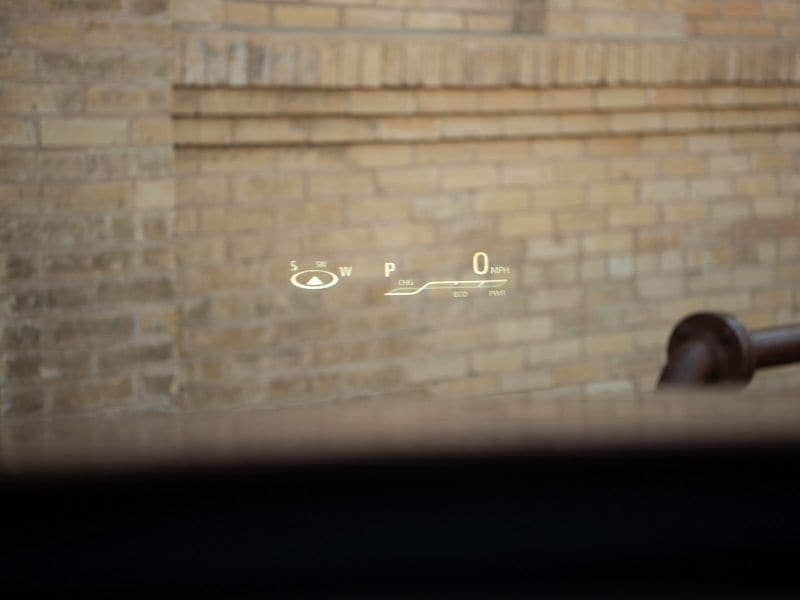
Photo by Toyota
8. The larger 2020 Highlander supplies more cargo room.
Wider and longer than the SUV it replaces, the new 2020 Highlander has more cargo room than before. This is especially evident behind the third-row seat, where the new Highlander offers 2.2 additional cubic feet for a total of 16 even. Know, however, that unlike several competitors, the storage compartment under the floor is quite shallow and small.
Fold the third-row seats down, and the Highlander can handle 48.4 cubic feet of cargo. That’s a big improvement over the old Highlander, which topped out at 42.3 cubes. With both rear rows folded, the new Highlander schleps 84.3 cubic feet compared to 83.7 in the previous version.
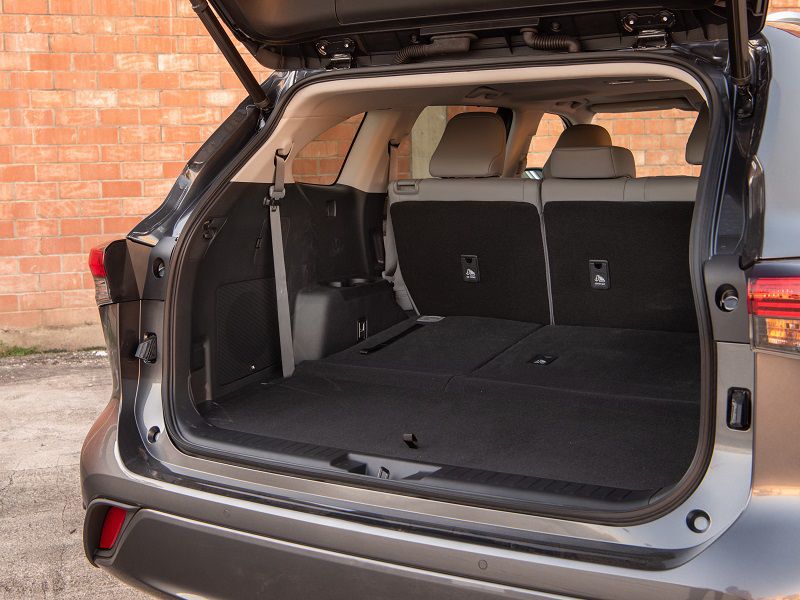
Photo by Toyota
9. The Highlander has the segment's largest multicultural market share.
According to Toyota, the Highlander enjoys the highest multi-cultural ownership share of the market in the mid-size SUV segment. Different customers seek different things, according to Toyota, but they all find what they’re looking for in the Highlander.
Not surprisingly, when Toyota breaks advertising for the all-new Highlander during the Super Bowl, it will be aimed at specific demographics within its target buyer group: “image-conscious Generation X and Millennials” who are the “leaders in their families.” As Toyota puts it, Highlander buyers focus equally on “me” and “we.”
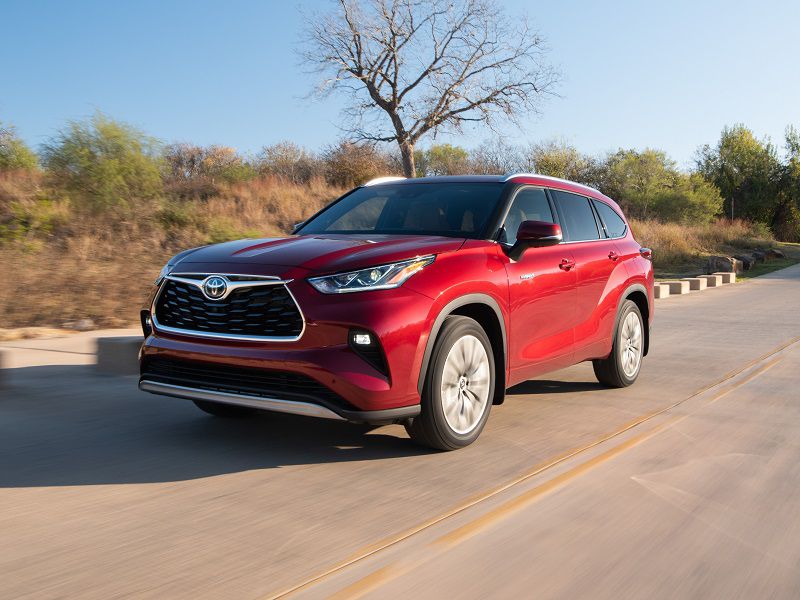
Photo by Toyota
10. The Highlander is built in America.
During the media driving event Toyota held in Gruene, Texas, I overhead bystanders discussing the new suv. One man explained to the other that while it was a Toyota, it was made in America, a fact the other man appeared to appreciate. You might be of a similar mind. So here are the details.
Toyota builds the 2020 Highlander in Princeton, Indiana. According to the automaker, the factory employs more than 5,400 people with an annual payroll of $325 million. Suppliers to the factory located across the state employ another 12,100 people. Toyota also made $1.7 million in donations to Princeton area nonprofit organizations in 2018.
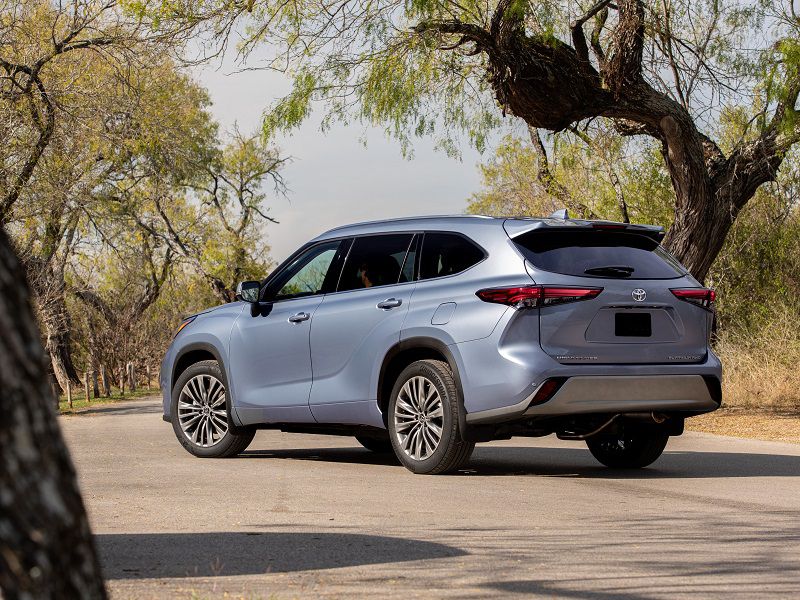
Photo by Toyota